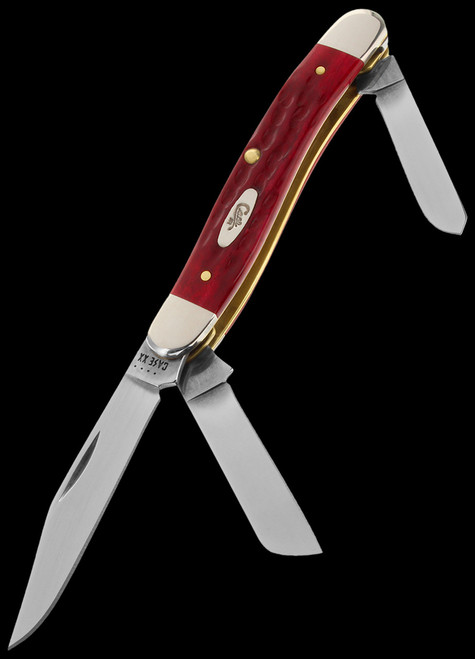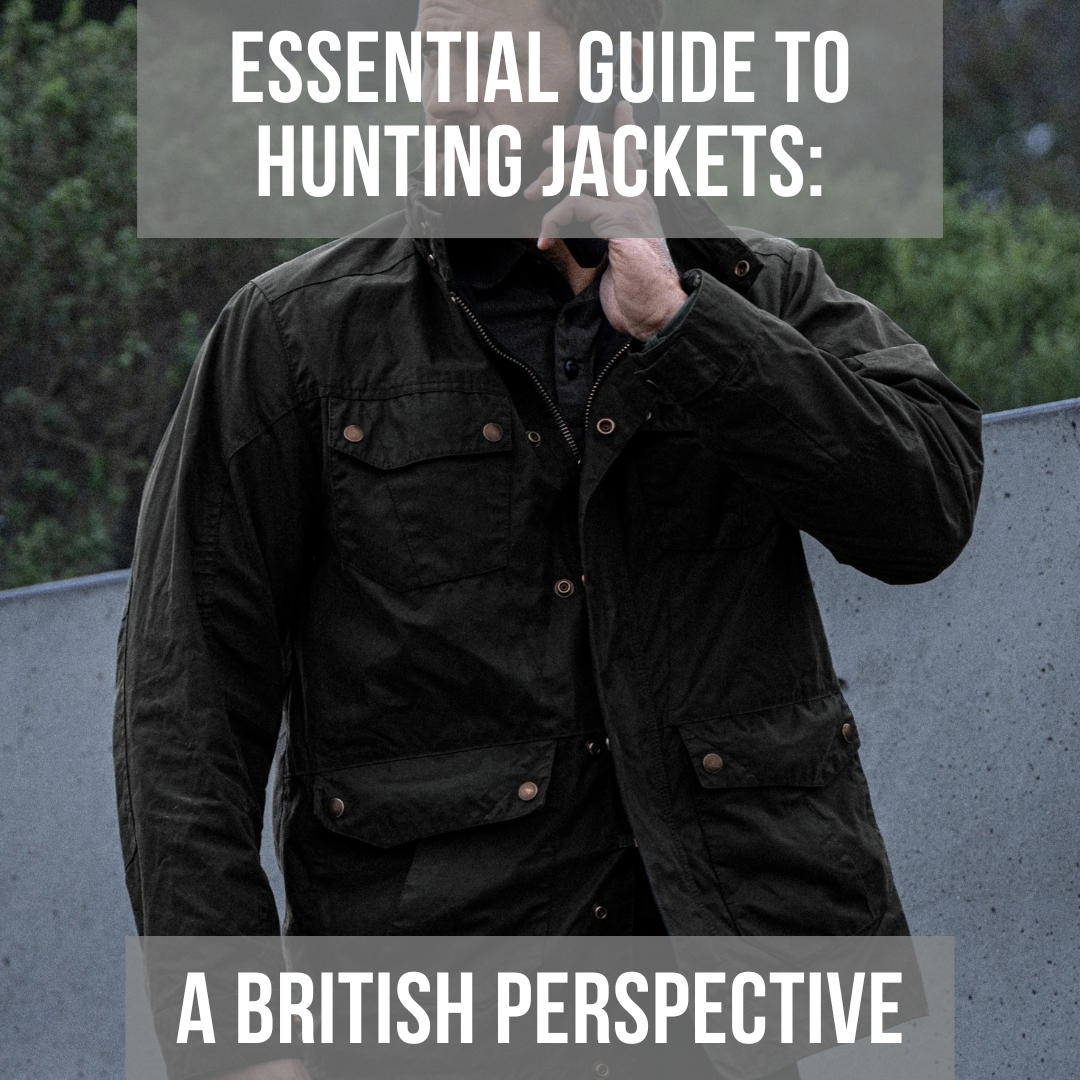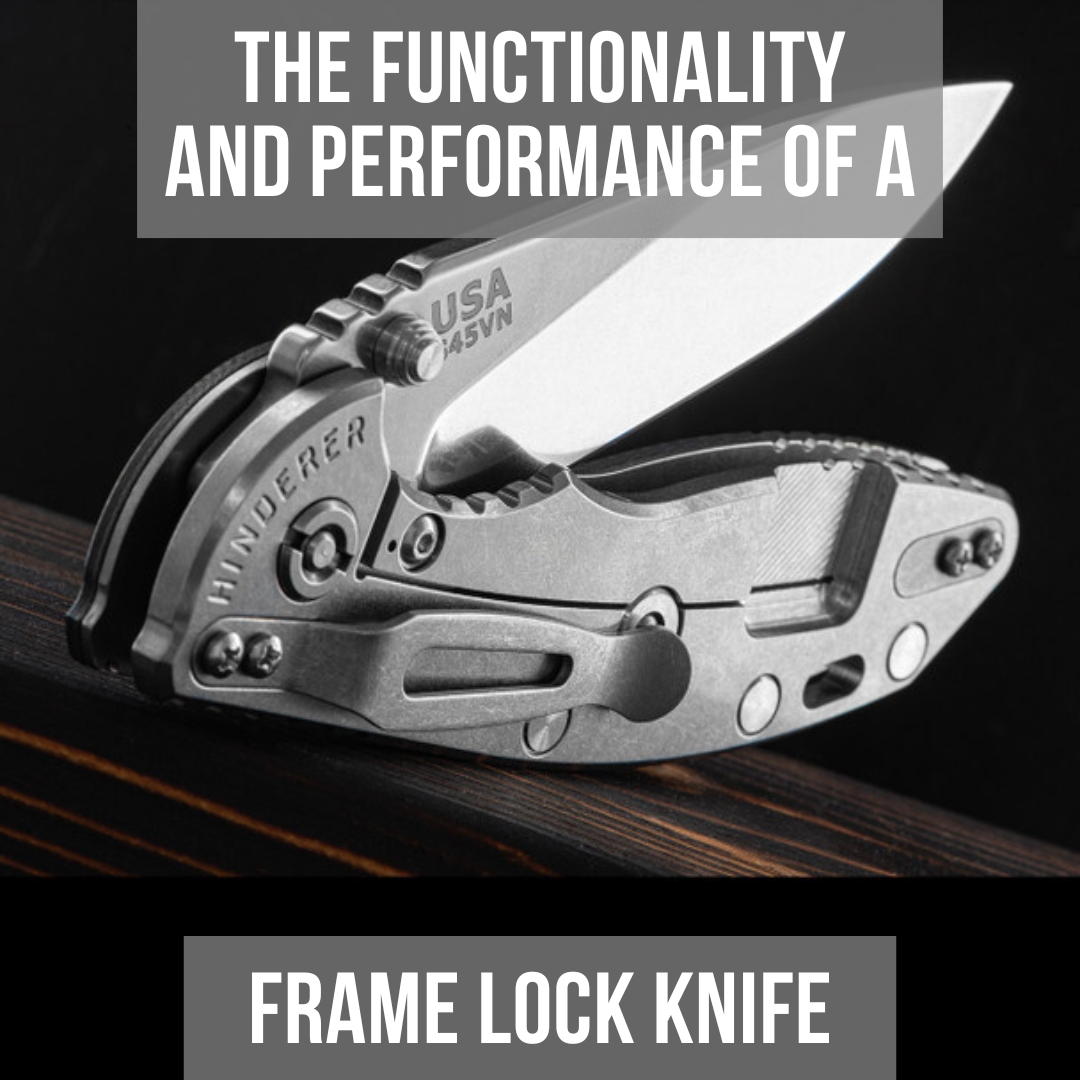This is the Stockman pattern that Case produces in far greater numbers than any other in their esteemed plethora of traditional slipjoint pocket knives. The three lines of text on the pile side (far side) of the sheepfoot blade are:
USA: Country of manufacture, of course.
6318: 6, meaning bone, the scale material, 3 the number of blades, and 18, the pattern number.
CV: Chrome Vanadium, blade material; tool steel. It is not chrome plated, it is carbon steel with chromium.
A stainless No 18 will read "SS" on the bottom line for, most logically, Stainless Steel.
The sheepfoot blade intentionally is designed to sit higher that the other blades, something unique to the No 18 pattern. At first this was a feature I did not care for, especially compared to vintage No 18 Stockmans, which are more sleekly fitted. In use, the higher position of the sheepfoot blade makes it easy to pinch it to open the blade. This even can be done with one hand, something the original design did not really (or easily) allow. It is still mildly irksome that the nail nick for the sheepfoot blade is on the pile side. I am sure that others may disagree. But I live with it, quite happily. This is actually the blade that I use the most. Right - curmudgeon time over now.
As a pocket friendly and UK daily carry pocket knife this one is a beautifully proportioned example with wonderfully rounded surfaces. Including the backs of the blades. No crisp corners here! This is a bit more refined than, say, a Buck Stockman, which I also like and appreciate. While the Buck is more chunky and utilitarian, the Case is streamlined, yet it is still just as capable of being a good dependable working knife. It has a most genuine, satisfying feel in hand.
The CV blades form a patina, darken up, with normal use, adding character to the honest agricultural pattern that has been in steady production for many decades. A patina on a carbon steel blade will impart some protection to the bright steel, similar to bluing on a gun barrel. You can of course polish the blades to keep them bright, and there are various products to do this. Or you can force a patina. Remove any oil from the blade surfaces first! If not, you will have a bizarre patchy look to your attempted patina. Not to worry. Buff the blade with jeweller's rouge or similar fine compound and bring the blade back to brilliant lustre. Try again. Mustard, vinegar, onion, potato, can all be used. I would say check its progress after a half hour, or an hour, don't leave it too long or overnight. At least I would not. Try not to get vegetable juices right into the joints. Flat Dr Pepper, not Coke, can also be used. Flat, because bubbles will leave tiny bright specks in the patina. You may or may not want this. Rest it point down in a narrow glass. Avoid the joints!
Your Case may well come with wire edges, fine burrs, on the blades. Desirable for a collector, it signifies that the knife has not been sharpened and is therefore almost certainly new. Many, but not all, traditional makers thus often leave a wire edge on. A first time buyer will likely not appreciate a wire edge. Years ago I truly did not. Stropping is the best method for removing the tiny burr. Thin cardboard smeared with buffing compound works fine. Check your progress by feeling for any remnants of the wire edge by using your fingernails. Go perpendicular to the edge, not along the edge. Check both sides of the blade, working your way gradually along the length of the blade. If your fingernail catches, a tiny wire edge is there. Don't have fingernails? A guitar pick works well, or a plastic bottle cap, or a SAK toothpick (do the uses for SAKs never end?).
Or if you have a light touch, you may be able to use a ceramic rod, Sharpmaker, maybe a diamond hone (light touch), or a good kitchen steel to reduce the wire edge. But loaded cardboard is the best method I've used. Others may know of different solutions; mine are suggestions, not gospel. With Case's excellent CV steel, a fine edge is easily achieved and maintained, and stropping truly makes the edge pop.
Put just a little oil on the joints now and then (standard for any pocket knife, really), and a tiny amount smeared on the blades to help keep rust away. If rust does appear, don't despair. Buff or even scrape it off, and oil it. If you are concerned about scratching the blades, use a matchstick to get most of the rust off. Then a tiny bit of buffing compound, on a cardboard or leather edge. If you have a buffing wheel, that's fine too. From time to time, blow out the slots, just open the blades, all the way, and cover the blades with a loose grip (don't cut yourself, eh?) and blow quickly into the open frame, like a harmonica, end to end. It helps to very briefly shut your eyes or squint to keep dust out of them. Or swab the insides with a cloth, tissue, small cotton bud, etc.
One thought about the spey blade and the sheepfoot blade. DON'T simultaneously open both blades partway so that the backspring they share is being put under maximum stress from both ends. It is the usual way for manufacturers to show all the blades at once, but nothing short of using to the point of destruction puts more unwanted stress on any shared or common backsprings. The old GI Demo knives, seemingly rugged pocket knives, cheaply mass produced for the American forces, were actually noted for breaking their springs because of this. Not that I have one, but it was a real design flaw. Still, opening all blades at all angles at once is poor practice, for any common, shared springs.
Also, the spey blade on a Case No 18 will generally have a more lively snap than the sheepfoot blade at the other end of the same blade layer. It is because of the curvature of the serpentine stockman pattern, as the frame undulates slightly. Most people find that the pattern is very ergonomic. The difference in action between these two blades is quite normal, and is something that the vast majority of users would not object to.
Also bear in mind that blade rub is reasonably common on many different types of patterns where the blades overlap or are in close proximity to one another. To make overlapping blades fit the same layer, crinking is used, that is, the blades are bent during manufacture so that they miss one another although some side contact, blade rub, is common. Normally this is nothing to worry about. Everything will still work properly. In severe instances, you may very gently adjust things yourself. It can be done with forethought and patience. Or, of course, make a return and arrange for a replacement.
Mineral oil seems to be a good choice for joints and blades. Victorinox sells their own, but any food safe mineral oil would be a good bet. Olive oil is okay for the blades but not the joints. No residue is the goal. Case uses a tiny bit of graphite dry lubricant in the joints. Don't think it is soot. Your new Case is not filthy. It is a good moisture free way to keep the joints protected in shipping. Dry graphite will eventually give way as you use and oil your Case. If the action feels sluggish or gritty, check for lint or debris in the joint, inside and out. A toothpick makes a great cleaning tool. Or use compressed air if you have access to it.
The bone scales will benefit from a tiny bit of oil well rubbed in. The tough cattle bone will eventually develop a richer colour, almost a luminosity. One thought: this is rare, and I've never experienced it with a Case knife. I have with an otherwise fine Colt Canoe. But if the shield ever falls out, clean the shield and its recess thoroughly. Use contact cement to reset the shield, clean any excess, let it set. Done.
If blade play develops, use a small hammer, a solid surface, like the anvil on a bench vise, wrap the loose end with a couple wraps of paper, even tissue paper helps to reduce marks, and by gradual trial and error, tap, then try your loose blade. Go slowly, check often. Buff the bolsters to remove any scuff marks. The pivot pin may protrude slightly after gently hammering. It can be carefully filed flush with a fine file or worked with an appropriate buffing wheel.
Blade play can occur with just about any maker's pocket knife. Or, someone may return a loaned one to you, having done something silly with it. Prying or twisting are prime crimes by the ignoratti. It isn't the end of the world, usually. Even a bent or warped blade can often be brought back to a straight condition with careful hammer work and patience. An ordinary nail hammer will do fine. Care and patience really are the keys. If the blade seems too tight, they often calm down with simple use and oiling.
For a while I carried mine in a Case horizontal leather sheath. It was comfortable, convenient, and secure. But I noticed a yellowish coloured mark on the bolster of the sheathed end of my Stockman. I had forgotten that the chemicals used in manufacturing the sheath, really any leather sheath, as far as I know, can react with the bolster, whether brass or nickel silver. Same thing with a Buck 110 Folding Hunter, and no doubt many others. Best to store it out of the sheath, not keep the knife in its sheath. Easy to buff out, though.
In this review I've tried to pass on some things I've found out, and hopefully this has been helpful. The Case Stockman is a fine pattern, and many versions from tiny to big are offered by this respected, well established maker. The No 18 is probably my personal favourite, very closely followed by the similar No 32 pattern Stockman which I notice HH has at present. Also in Amber Jigged Bone and with CV blades, it offers a nice pen blade in contrast to the No 18's spey blade, and has only just slightly thinner, squared pinched end bolsters. The sheepfoot blade on a No 32 pattern sits much lower, and looks sleek, although I cannot pinch-open it. The No 32 clip blade is wider than the slender clip blade on the No 18 Stockman. Both are excellent genuinely lovely pocket knives. As authentic as it gets for the mid-sized Stockman pattern. Great stuff!
Thank you, Heinnie, for making these available!















